‘Saemidori’ is one of the tea cultivars for green tea, suiting to Sencha, Gyokuro and matcha due to higher umami, bright green color and higher suitability to shade cultivation [505]. ‘Saemidori’ cultivar was developed from ‘Asatsuyu’ as the seed parent and ‘Yabukita’ as the pollen parent [504]. Its higher content of umami might be derived from the seed parent ‘Asatsuyu’, which is called as “Natural Gyokuro” because of its higher umami without shading.
‘Saemidori’ has gained its popularity year by year. Many prefectures of tea estates certifies it as a recommended variety due to its prominent quality [505]. The excellent flavor has got familiar to consumers, indicated in the number of prized products of ‘Saemidori’. In the national tea competition, the prized tea cultivars for “Gyokuro” and “Tencha” are limited to some varieties. Saemidori is one of the limited cultivars in Gyokuro and Tencha section. The number of application for Japanese Tea Award 2017 also indicates the gaining popularity of ‘Saemidori’. 2 of prized 18 teas are ‘Saemidori’. One of the two is the best prized one. Besides, ‘Saemidori’ tea has been prized in the top 4 in Japanese Tea Award since the first time 2014. The fact indicates the flavor of ‘Saemidori’ suiting to up-to-date preference of consumers.
As for the prominent teas of ‘Saemidori’, its popularity and subtle flavor have been posted before.
< Saemidori grown on Mugyo upland by Kanetou Miura-en>
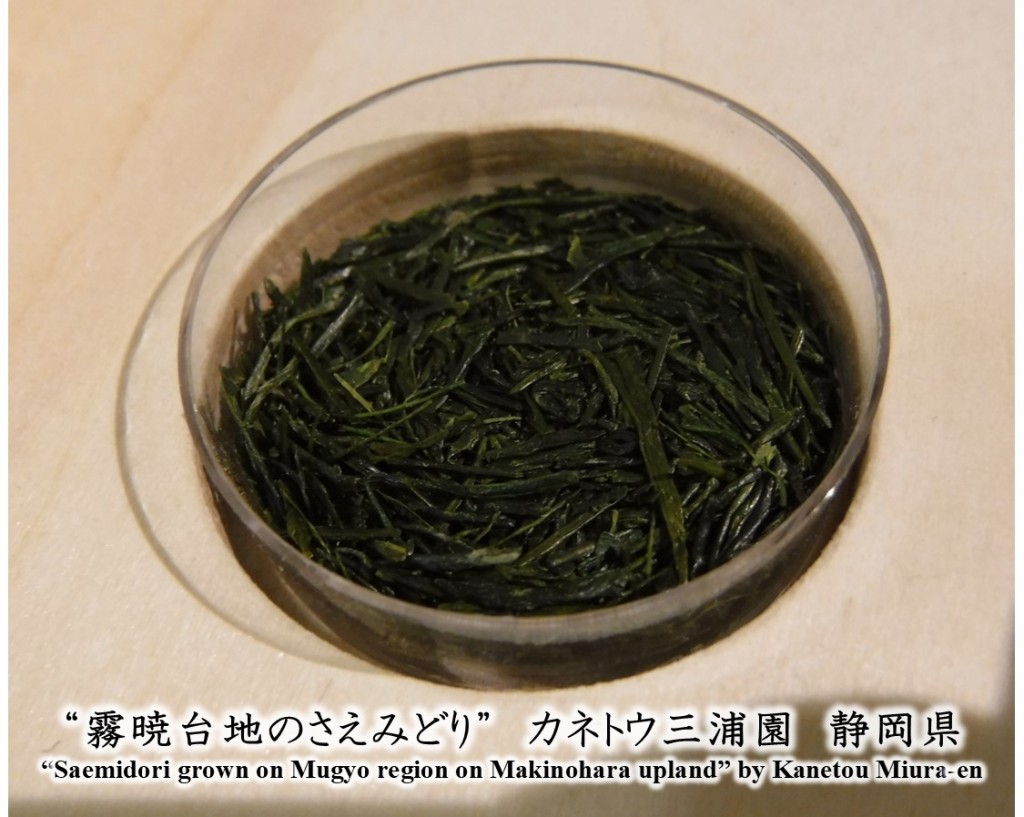
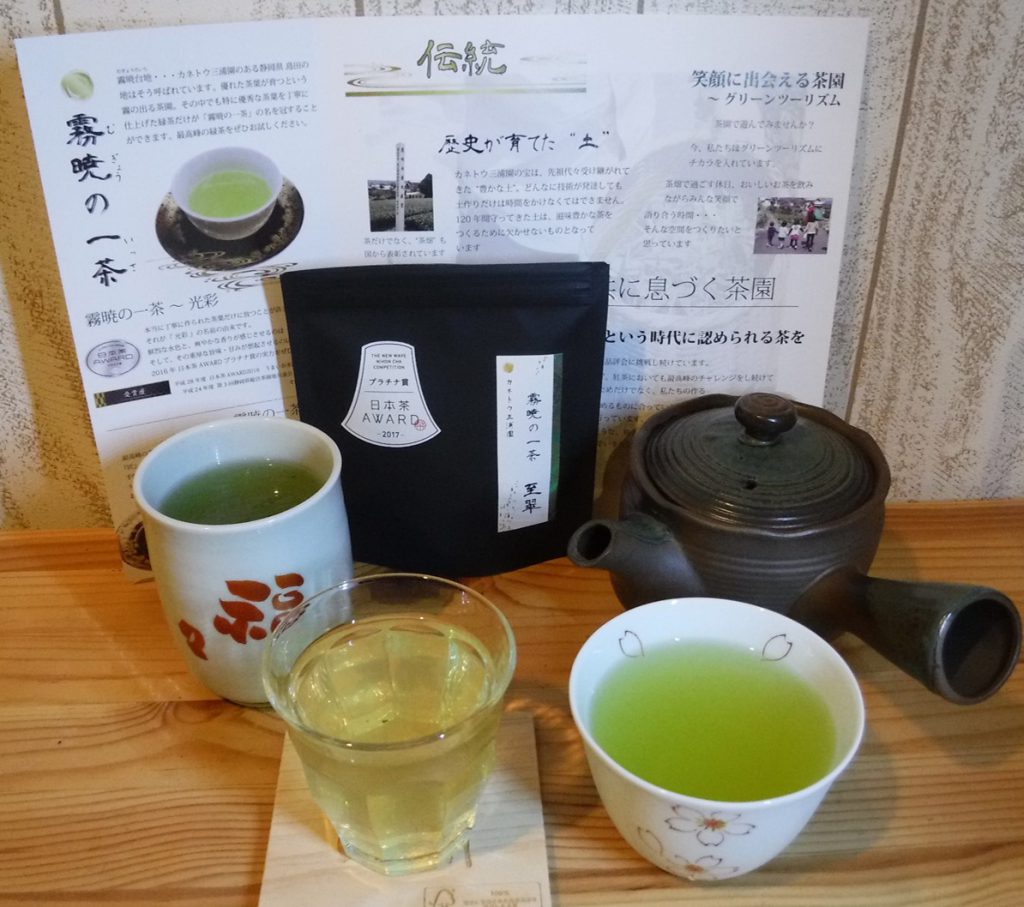
Prized as the Platina Award in Tokyo Tea Party 2017.
< “Flavorful Green Dew” is produced by Okada Shoten >
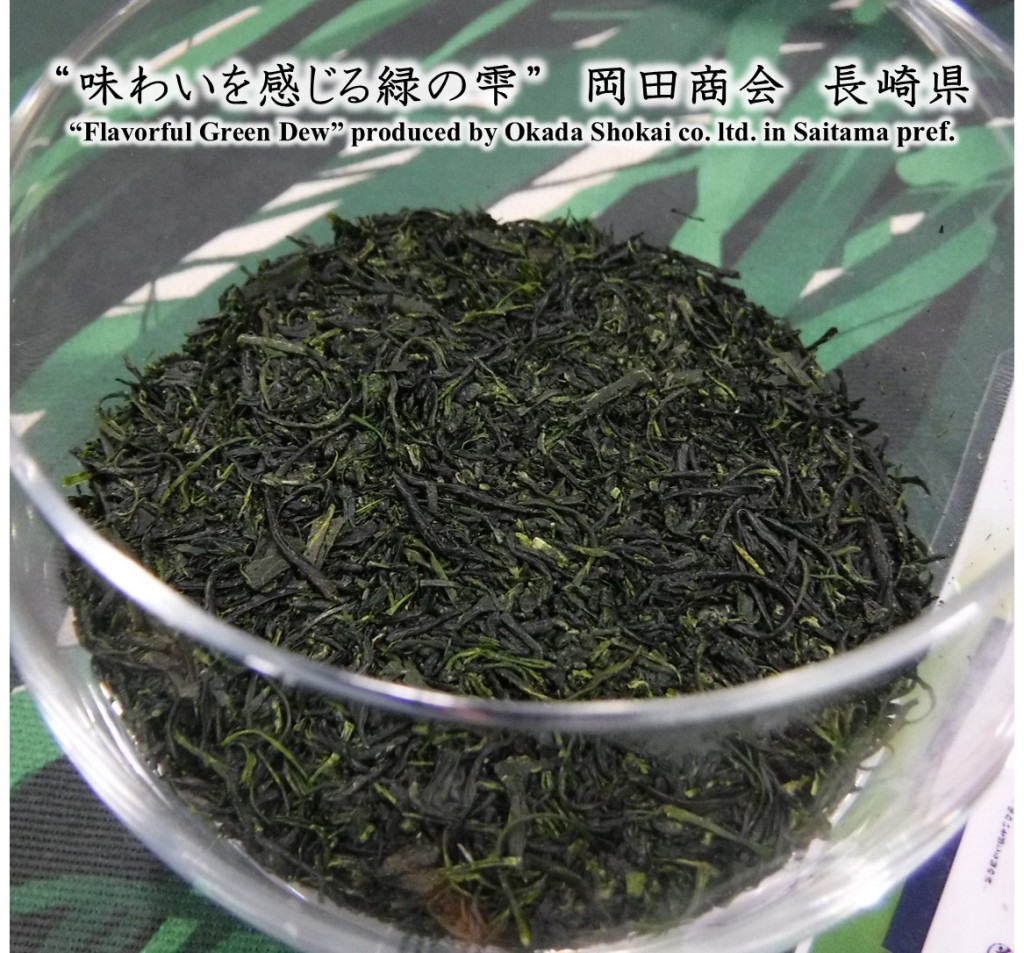 Prized as the best Japanese Tea Award in Tokyo Tea Party 2017.
Prized as the best Japanese Tea Award in Tokyo Tea Party 2017.
< Gyokuro of ‘Saemidori’ produced in Asahina tea estate in Shizuoka >
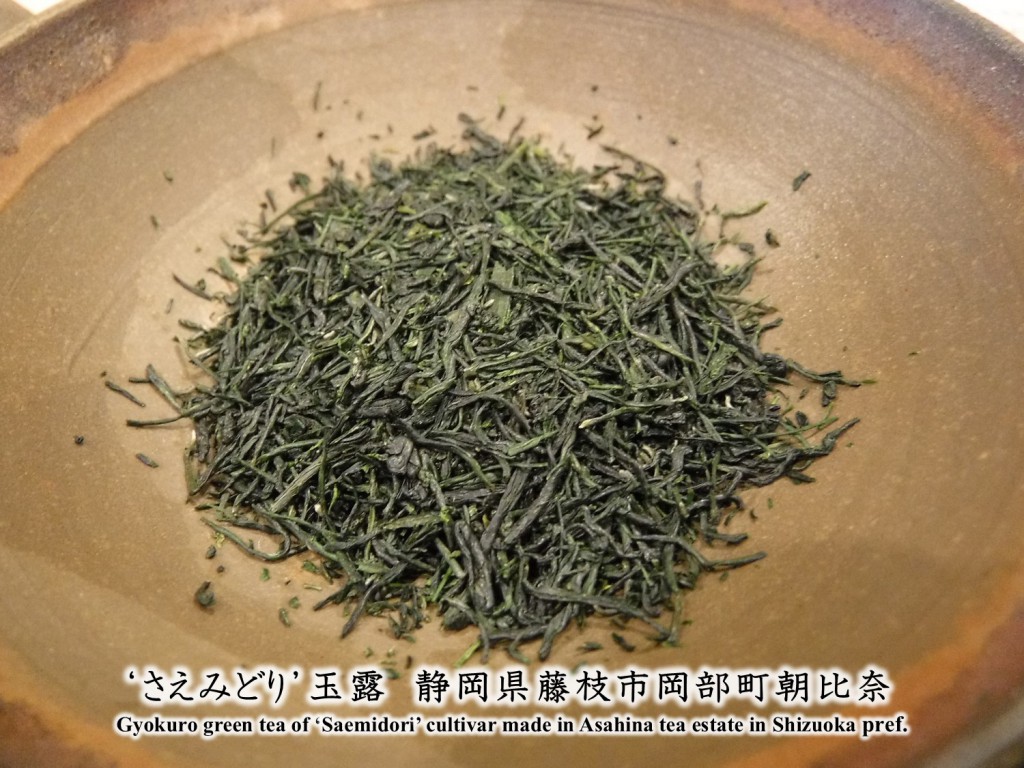
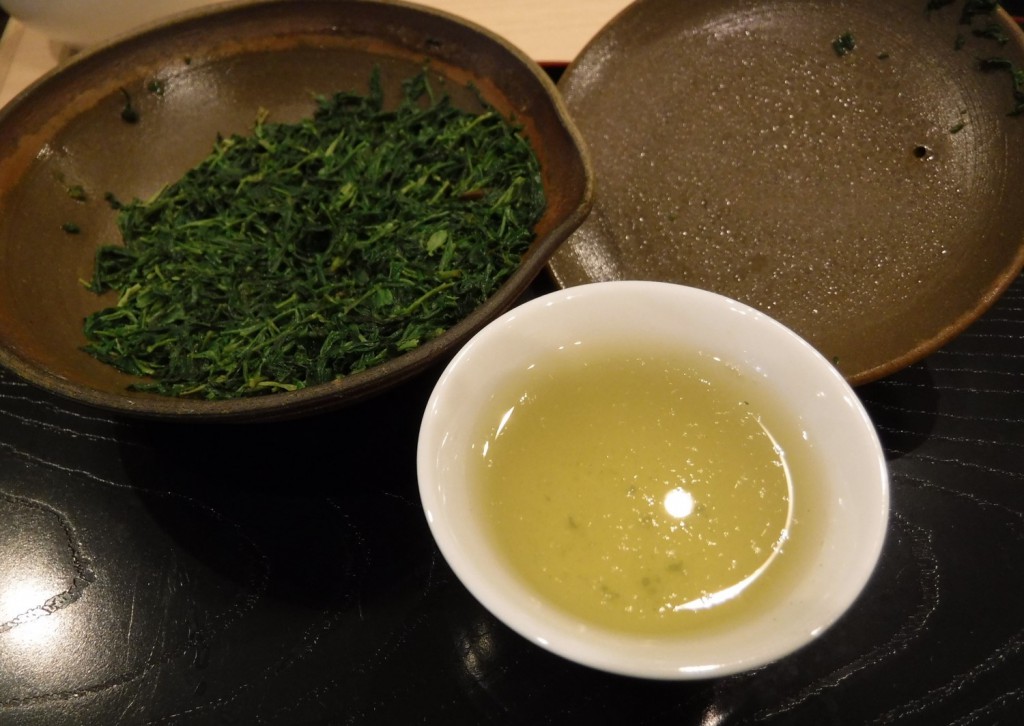
Corresponding to the demand for ‘Saemidori’, the cultivation area has increased successively. The area reached to more than 1,400ha, equivalent to 3 % of total cultivation area of domestic tea production. In 2005, the cultivation area was 600ha, which was 6th largest area, next to ‘Yabukita’, ‘Yutakamidori’, ‘Sayamakaori’, ‘Okumidori’, ‘Kanayamidori’ [505].
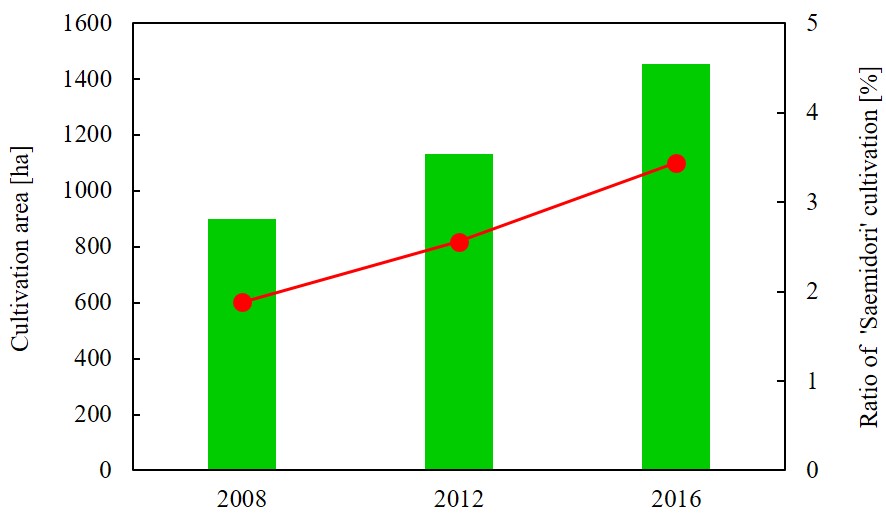
This variety is the early budding cultivar as shonw in the following picture.
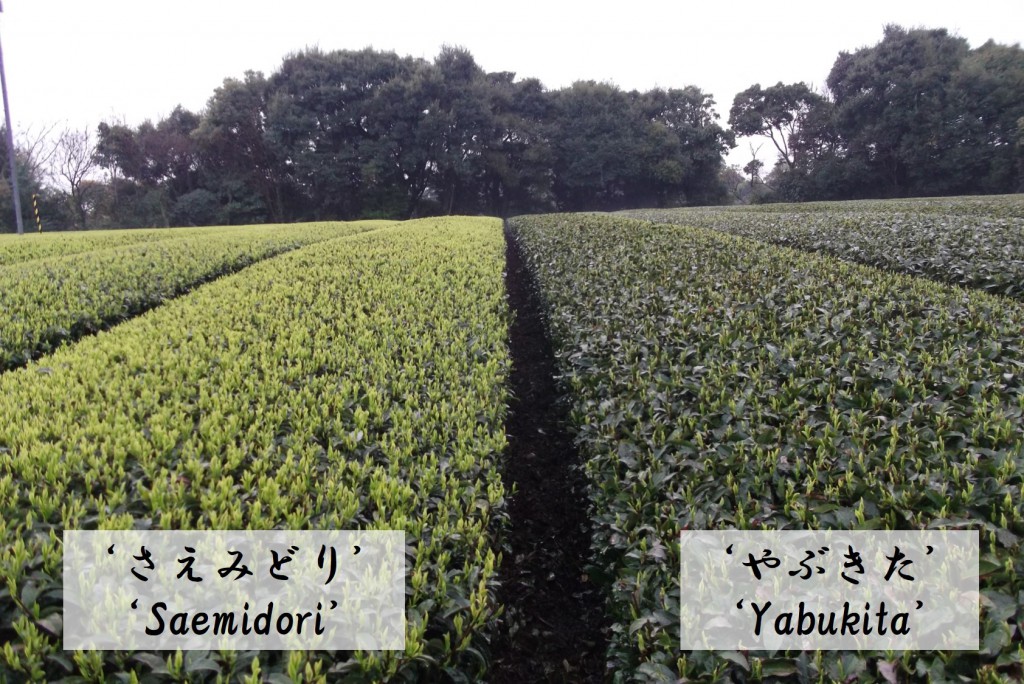 ‘Saemidori’ has higher tolerance to freezing damage, bark split frost injury than ‘Yutakamidori’, the early budding cultivar of 2nd largest cultivation area. This cultivar is fairly resistant to tea anthracnose caused by Gloeosporium theae sinensis, but very susceptible to gray blight caused by Pestalotia longiseta.
‘Saemidori’ has higher tolerance to freezing damage, bark split frost injury than ‘Yutakamidori’, the early budding cultivar of 2nd largest cultivation area. This cultivar is fairly resistant to tea anthracnose caused by Gloeosporium theae sinensis, but very susceptible to gray blight caused by Pestalotia longiseta.
According to the experience of tea farmers, it is difficult to manage the nurseries of ‘Saemidori’ after planting. Especially soil conditions would affect the growth of young tea plants of ‘Saemidori’. Thus it would take more years for tea plants of ‘Saemidori’ in the undesirable soil condition to mature enough to harvest the average yield. The difficulty of young tea plants might be derived from the root system. Nakamura (1999) reported ‘Saemidori’ tea nursery formed relatively small root system [506].
Though ‘Saemidori’ is hardy both to cold in midwinter and to bark splitting injury in early winter, this cultivar is susceptible to frost damage in late spring. In addition, the overwinter leaves sometimes suffer freezing damage in the midwinter. Light trimming after frost damage and covering with moderate shading in winter time have been investigated as efficient countermeasures for the frost damage and the freezing damage, respectively [508].
Due to its higher quality suiting to Sencha, Gyokuro, Matcha, the seed or pollen of ‘Saemidori’ is often used for the propagation of new cultivar. ‘Saeakari’ has been certified as a tea cultivar in 2011, which has been developed from ‘Saemidori’ as a pollen parent and ‘Z1’ as a seed parent. Lately ‘Kirari31’ has been published as a applied new cultivar. ‘Saemidori’ is the seed parent of ‘Kirari31’, and the pollen parent is ‘Sakimidori’.
Because of the higher quality as green tea, ‘Saemidori’ is often processed to Sencha, Gyokuro and Tencha, a crude tea of Matcha. On the other hand, some professionals told semi-oxidized tea of ‘Saemidori’ is also excellent. If the demand for semi-oxidized tea of ‘Saemidori’ increases, we would enjoy profound oolong tea of ‘Saemidori’. I hope some tea farmers would try the oolong tea production.
